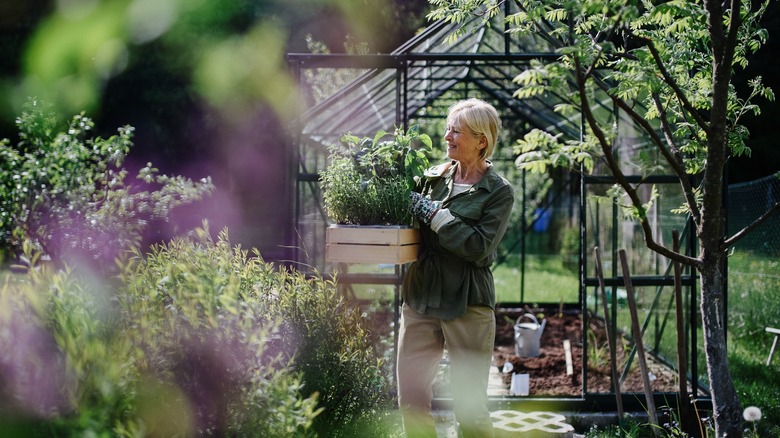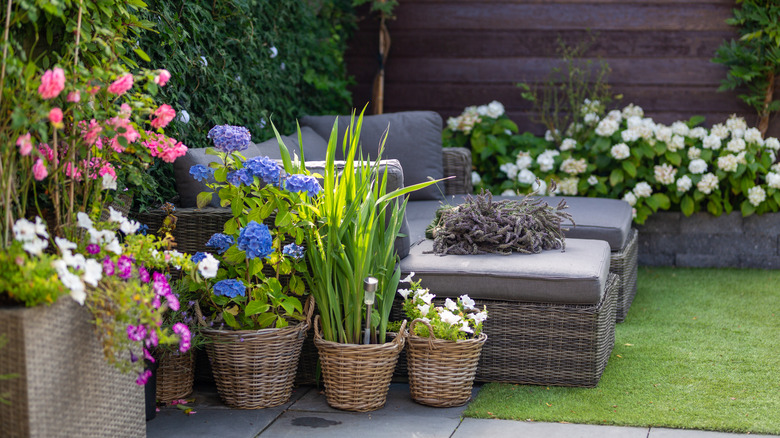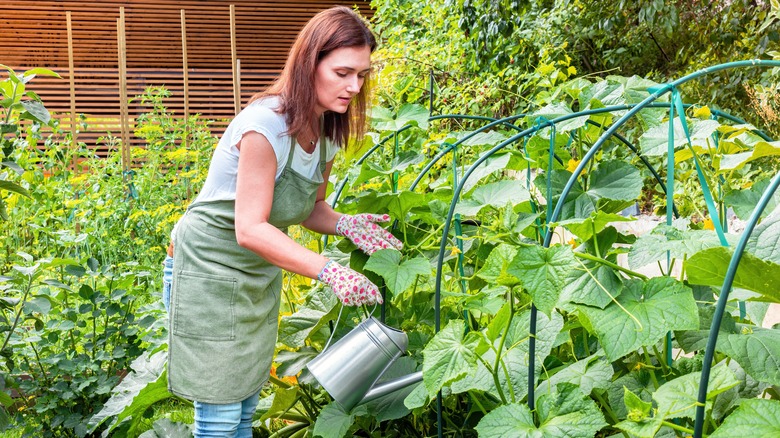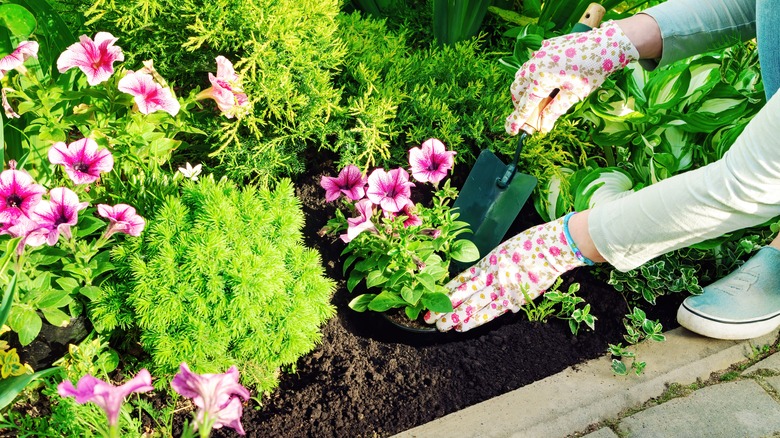3 Gardening Mistakes Everyone Makes When It's Super Hot Out
The summer sun can be great for plants, but once a heatwave comes, it can hurt them more than help. An outside temperature above 90°F is when plants will start showing adverse signs to the heat, according to Oregon State University. Once the temperature is consistently above 104°F, young and compromised plants will begin to die if precautions are not taken. During a heatwave, plants should not be transplanted, fertilized, or pruned.
There are signs to look out for to save your plants from dying in the summer heat. The easiest sign to notice is if the leaves are turning brown. The leaves can become brown and crispy along the edges or have brown burn marks on them. These are signs that the sun is too strong for your plant and it should be moved to the shade. Plants may also drop their flowers or buds in extreme heat. They do this to conserve energy. If you notice your plants doing this, make sure they have shade and are being watered enough.
Leaving plants in full sun
It makes sense that plants would want to be in the sun, but in a heatwave, the sun can be too strong, even for plants that thrive in full sun. It's a common mistake to think that all sun is good. Making sure to give your plants shade during super hot summer days is necessary to not kill the plant. Plants need shade on super hot days because the sun and heat will burn their leaves, cause any flowers to drop, dry out the roots, and, in the worst cases, kill the plant, according to Oregon State University.
If your plants are in pots, it is easier to give them shelter from the sun. They should be moved to a shady area until the temperature is lower. Plants in pots that are a dark color, like black plastic nursery pots, need to be in the shade because the dark-colored pot will attract more sun and burn the plant's roots. If your plants are planted in the ground, you can provide shade by setting up a beach umbrella, creating a tent out of bed sheets, or even using propped-up cardboard. No matter which material you choose to provide shade, the LA Times suggests leaving enough space between the shade and plants so the air can still circulate freely.
Watering at the wrong times
During the summer, the time of day that you water your plants matters. If you are watering your plants on a super hot day during the middle of the day, it is almost like you are not watering your plants at all. The middle of the day is when it is the hottest out. By watering at this time, the water will evaporate from the heat before it even has the chance to reach your plant's roots, according to One Green World.
The best time to water plants when it's super hot outside is first thing in the morning. If you miss this time, the second best time to water is in the evening. The morning is the best time because it will be cooler outside, giving the water a chance to satiate your plants. Potted plants should also be watered more than usual, in the morning and evening. You'll know if you've been overwatering your plants if the leaves wilt and don't return to normal by the next morning.
Transplanting plants
A big mistake to make with your plants in the hot summer heat is transplanting them. Planting nursery plants in the heat will put them at a high risk of dying. This is because young plants have a fragile root system that is closer to the surface of the dirt that they are growing in. This means that their roots are more likely to dry out in a heatwave, killing the plant before it can establish a more mature root system in its new home. Transplanting already creates a lot of trauma to a plant so adding extreme heat to the situation will not help.
Earth Easy explains that transplanting even mature plants during a heatwave can be dangerous to the plants. When you dig, the heat is exposed to new parts of the soil, heating it up and causing the water to evaporate. A crucial part of transplanting is watering the plant after it's in its new home, but this step can't be done properly if the heat is causing the water to quickly evaporate before getting to the plant's roots.



